Porsche Boxster 986 – The Story
An Entry Level Sports Car That Became An Instant Classic
986 Story / 986 Timeline / 986 Model Guides / MY Differences / Image Gallery / Specs / Misc Data / FAQs / News
Type: 986 (986.1, 986.2)
Generation: First Generation
Manufacturer: Porsche AG
Production Years: 1996 - 2004
Model Years: 1997 - 2004
Designer: Grant Larson under Harm Lagaay
Body Style: 2-Door Roadster
Layout: Mid-engine, rear-wheel drive
Engines: 2.5 L Porsche M96.20 flat-6 (1997–1999), 2.7 L M96.22/M96.23 flat-6 (2000–2004), 3.2 L M96.21/M96.24 flat-6 (2000–2004)
Transmission: 5-speed automatic, 5-speed manual, 6-speed manual
Date of unveil: official photos in March 1996 (Geneva Motor Show)
Premiere: Journalist events from August 23, 1996 in Bergisch Gladbach, Germany, public premiere October 3, 1996 Mondial de l’automobile Paris Motor Show
Market launch: November 1996 (as a 1997 model)
The Porsche Boxster was initially unveiled as a concept in 1993 at the Detroit Auto Show, before going on sale in the summer of 1996 (as a 1996 model year in the United States). The first 986-generation Boxsters to reach U.S. shores were 1997 model-year base cars, equipped with a mid-mounted 2.5-liter naturally aspirated flat-six. Thanks to dual overhead cams, four valves per cylinder, and a dry-sump lubrication system, the engine was able to make 201 horsepower and 181 lb-ft of torque, with a redline of 6700 rpm. Sending power to the rear wheels is a five-speed manual transmission or an optional five-speed Tiptronic automatic. The 0-60 sprint happens in 6.1 seconds, and top speed is 149 mph. With a curb weight just under 2800 pounds, it’s almost guaranteed to put a smile on your face.
The car received a significant update in 1999 for the 2000 model year, with a bigger base engine, tuned intake runners, and a more powerful S model. Following customer feedback, the base 2.5-liter flat-six was enlarged to 2.7 liters, resulting in an increase of 16 horsepower and 11 lb-ft of torque. The S model got a 3.2-liter naturally aspirated flat-six making 250 horsepower and 225 lb-ft of torque, as well as a six-speed manual gearbox, bigger cross-drilled brakes from the 996, Carrera wheels, upgraded suspension components, a third radiator up front, and a dual-exit exhaust. It has a higher 7200-rpm redline, and was able to sprint to 60 mph in 5.2 seconds when new.
In order to fend off increasing competition from the Mercedes-Benz SLK and BMW Z3, the 986 received yet another refresh from Porsche in 2003. Output from the base 2.7-liter car grew to 225 horsepower, while torque remained the same at 192 lb-ft. The S model’s engine saw a slight increase in performance as well, with gains of eight horsepower and four lb-ft of torque. For 2003, the base car got the S’s shocks and springs, while the S got bigger sway bars.
For the 986’s final model year, 2004, Porsche introduced the 550 Spyder 50th Anniversary edition Boxster, based on the S model. The most powerful first-gen Boxster produced, it made 264 horsepower from its 3.2-liter flat-six. Other upgrades include a short-throw shifter, a bespoke exhaust, a 10-millimeter lower suspension, and a five-millimeter wider track. All 50th Anniversary cars were painted in GT Silver Metallic, with a cocoa brown leather interior and brown soft top. Only 1953 examples—reflecting the year of the 550 Spyder's debut—were built, and only 500 were sold in America.
This graphic breaks out the first generation Porsche Boxster in terms of timelines and how to tell all the models apart. Click on the image to see it in higher definition. Note that the was the initial Boxster 986.1 and then a mid-cycle refresh for the 2002 model year and beyond, known as the 986.2 update. There were two Boxster models, the base model which came out first, followed a few years later by the more powerful and interesting Boxster S. There was also a special edition in the final year of production.
The 986 Boxster is introduced
Technical Specifications: 201 HP 2.5 Litre engine with a 5 speed manual transmission or optional 5 speed Tiptronic (automatic).
Early cars were produced in Stuttgart (11th digit of VIN is “S”) while later cares were produced in Finland. (11th digit is “U”).
Technical Specifications: 201 HP 2.5 Litre engine with a 5 speed manual transmission or optional 5 speed Tiptronic (automatic).
Changes: 18” wheel available as an option with rear chassis reinforced to accept new wheels. Rear body structural change included redesigned wheel wells and coil spring mounts, lower engine compartment bulkhead, rear wall crossmember and rear axle mount reinforcements.
Side air bags were offered as standard (not available in ’97.) and satellite navigation was now an option.
Technical Specifications: 201 HP 2.5 Litre engine with a 5 speed manual transmission or optional 5 speed Tiptronic (automatic).
Changes: Small storage compartment between engine compartment lid and the convertible top. Larger and redesigned fuel tank and venting system including a fuel tank differential pressure sensor.
Xenon Litronic headlights was now an option.
The S model is introduced.
Base Technical Specs: 217 HP 2.7 Litre engine with a 5 speed manual transmission or optional 5 speed Tiptronic (automatic).
S Technical Specs: 250 HP 3.2 Litre engine with a 6 speed manual transmission or optional 5 speed Tiptronic (automatic).
Changes: New Base 2.7 engine with highet output and increased redline from 6700 to 7200rpm. Twin resonance induction and ME7.2 Electronic Throttle System (eGas) on both 2.7 and 3.2Litre engines (new intake manifold with DME controlled flap). on both 2.7 and 3.2Litre engines. Warm up catalytic converters (now 4 converters total) for emissions on both 2.7 and 3.2Litre engines. Gearing change on 4th and 5th gears in Base model manual gearbox. Tiptronic gearbox also revised to work with larger engines, temporary manual mode allowed even while in Auto mode. Trans-fluid to water heat exchanger added. Suspension changes, including shocks, sway bars and springs. Manual seat height adjustment and lighted vanity mirrors now offered as standard. Subwoofer speaker system as option and Silver look trim in door pulls, lid openers, instrument bezel trim.
S Model includes larger brakes, stronger wheel bearing carriers, larger bearings and longer control arms. Wheels are 17” as standard, there’s an additional front radiator grill, left and right radiator inlets titanium, twin exhaust tailpipes, specific “S” Door sill trim, a new 3-spoke steering wheel and Cloth headliner and changes to the top mechanism.
Base Technical Specs: 217 HP 2.7 Litre engine with a 5 speed manual transmission or optional 5 speed Tiptronic (automatic).
S Technical Specs: 250 HP 3.2 Litre engine with a 6 speed manual transmission or optional 5 speed Tiptronic (automatic).
Changes: All Boxsters got 3-spoke steering wheels with Porsche crest, Ambient lighting standard (door pulls, ignition switch and center console). Trunk releases made electronic switches instead of pull handles. Ignition key allows remote access to both trunks. Cloth headliner standard on all Boxsters. Porsche Stability Management as optional. Roll bar soft touch paint. Trunks got new carpeting. Optional rain sensing wipers Dual cup holders.
Base Technical Specs: 217 HP 2.7 Litre engine with a 5 speed manual transmission or optional 5 speed Tiptronic (automatic).
S Technical Specs: 250 HP 3.2 Litre engine with a 6 speed manual transmission or optional 5 speed Tiptronic (automatic).
Changes: Front seat belt pre-tensioners and force limiters. New multifunctional display inside instrument cluster when optional on board computer ordered. Keys have color Porsche crest. Matte surface switches. Anti-entrapment trunk release lever. Optional Bose sound system replaces previous digital sound package. Additional colors: Black, Carrera White, Basalt Black Metallic.
Major upgrade in engines output and interior.
Base Technical Specs: 228 HP 2.7 Litre engine with a 5 speed manual transmission or optional 5 speed Tiptronic (automatic).
S Technical Specs: 258 HP 3.2 Litre engine with a 6 speed manual transmission or optional 5 speed Tiptronic (automatic).
Changes: Lockable glove box. Improved cup holders. Bose digital audio system option. Base model gets same suspension as 2002 S model. Glass rear window (heated) standard. Grey/White turn signals replace the prior years yellow/orange ones. Larger air intakes. Side air intakes body colored. Altered rear air spoiler. Different front and rear bumpers. Redesigned and lighter wheels. Tweaked exhaust. Center vents smaller. CDR-23 uses MOST audio bus. Standard in-dash CD player. Optional PCM II using MOST. Switches horizontal. Revised console (between seats). New anti-roll bars in “S” model.
Last production year.
Base Technical Specs: 228 HP 2.7 Litre engine with a 5 speed manual transmission or optional 5 speed Tiptronic (automatic).
S Technical Specs: 258 HP 3.2 Litre engine with a 6 speed manual transmission or optional 5 speed Tiptronic (automatic).
Changes: New colors available, Atlas Gray and Carmon Red. New sports exhaust system as option.
A special 2004 Boxster 550 S model is available. 1953 units were built to mark the year the Porsche 550 Spyder was first introduced. It included 3.2Litre engine 266 HP at 6200 RPM, 6 speed manual transmission, or Tiptronic 5 speed optional, GT silver metalic paint, Cocoa full-leather interior with perforated sport seats and steering wheel (also available is Dark grey with option code DY), Cocoa convertible top, 18” Carrera wheels with colored crests and grey spokes (delete grey option code 192), Silver brake calipers, Color-matched roll hoops, Unique stainless steel exhaust tip, Xenon Litronics headlights with washers, GT Silver interior accents, Unique aluminum shifter and handbrake, Heated seats, On-board computer, Chrome rimed gauges, Hi-Fi Stereo system, Custom grill inserts for rear bumper, Special chrome badging for rear deck lid and interior, Special rear tail light lenses (all red), Sports suspension, Spacers on all 4 wheels for wider track, PSM – Porsche Stability Management
The base Porsche Boxster didn't light the world on fire in terms of performance figures when is came out in 1997. It was a wonderful sports car but 6.7 second 0 - 60 mph was slow compared to the BMW M cars of the era. The upgrade to a 2.7 liter engine in 2000 helped a little, but it was the Boxster S with its bigger engine and better hardware that had serious performance. 0 - 60 mph in 5.6 seconds and a quarter mile in just over 14 seconds was legit. The 986.2 upgrades in 2003 gave both models some more power and that translated into better performance.
The first-generation Porsche Boxster (986) had a sleek, roadster design inspired by the classic 550 Spyder, with smooth curves, integrated bumpers, and signature “fried egg” headlights shared with the early 996 911. It combined Porsche’s traditional styling cues with modern proportions and aerodynamics to create a balanced, purposeful sports car look.
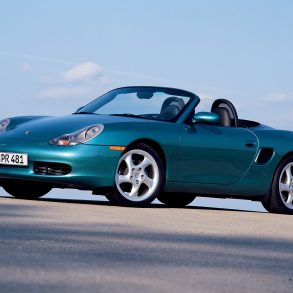
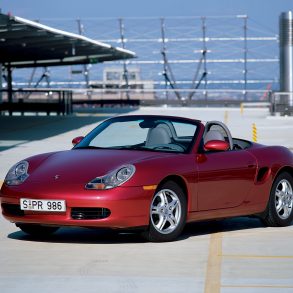
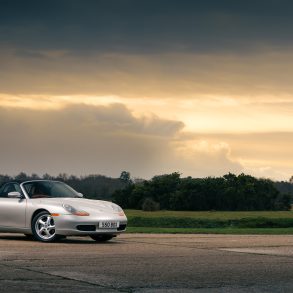
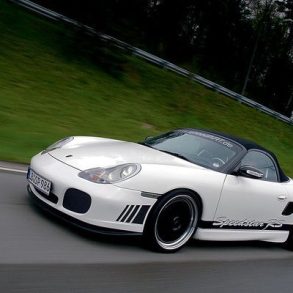
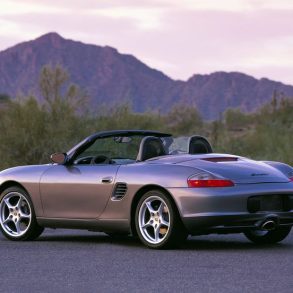
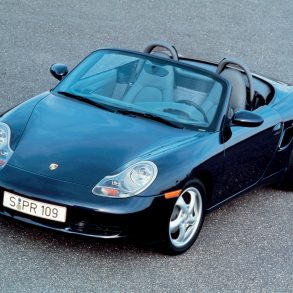
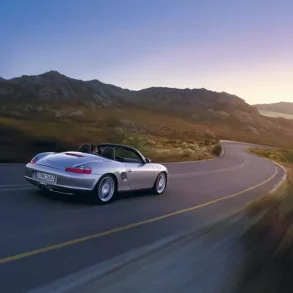
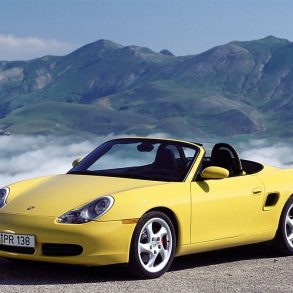
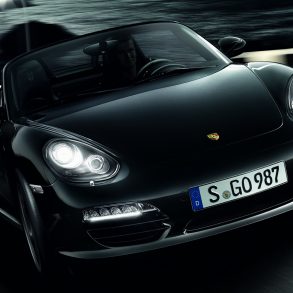
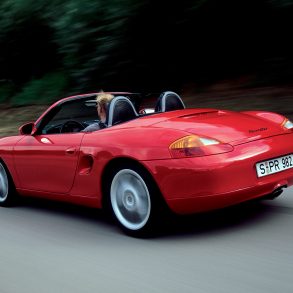
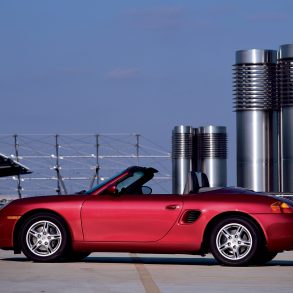
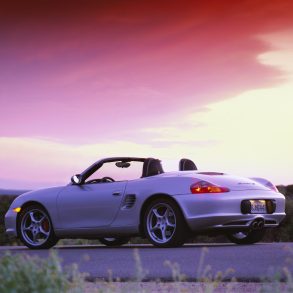 220184S57
220184S57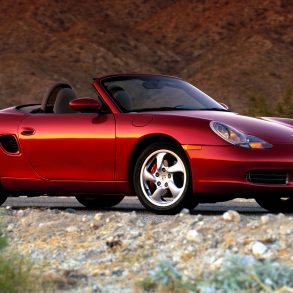
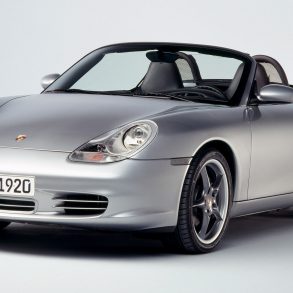
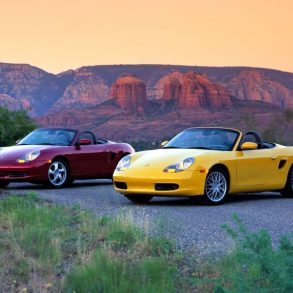
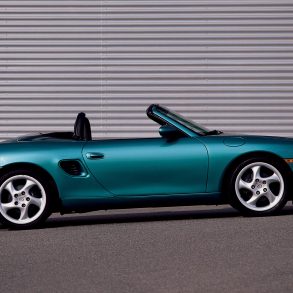
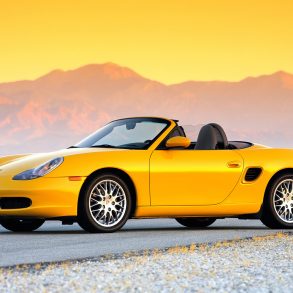
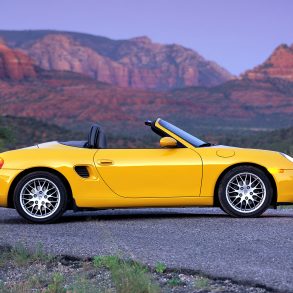
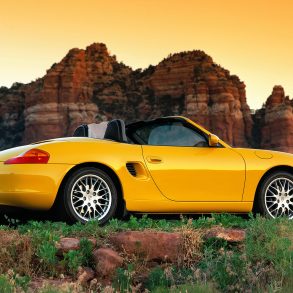
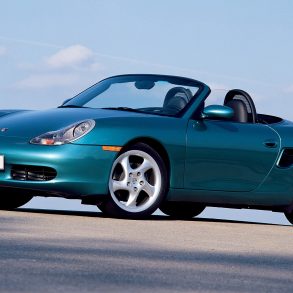
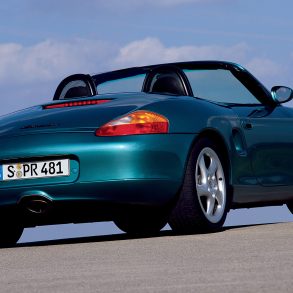
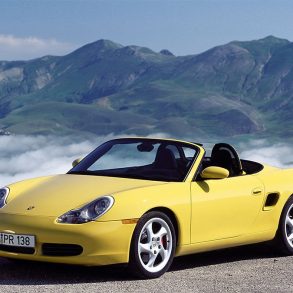
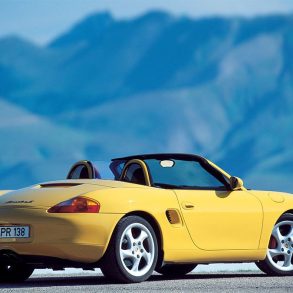
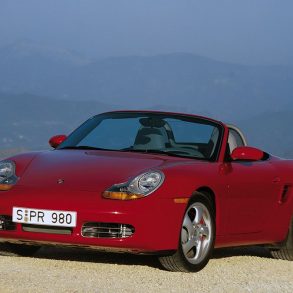
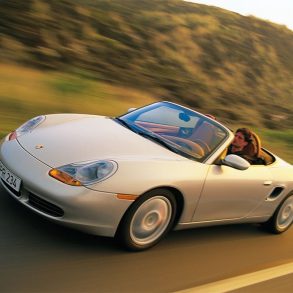
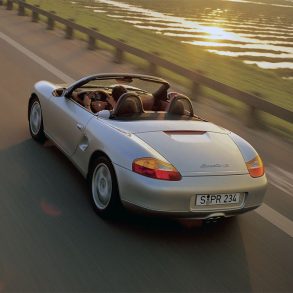
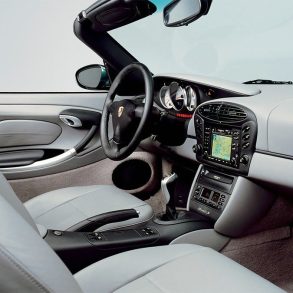
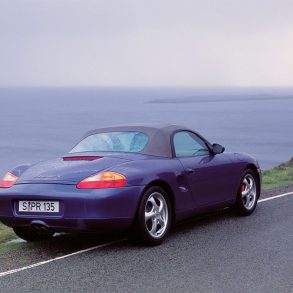
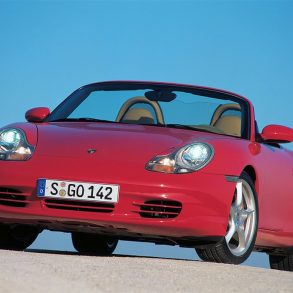
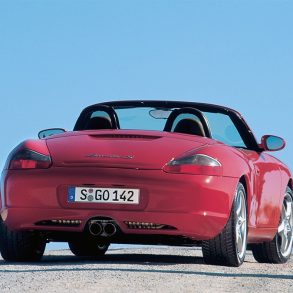
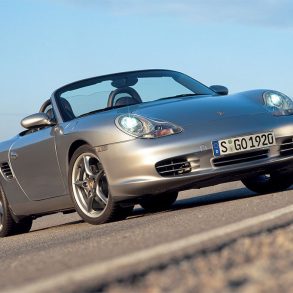
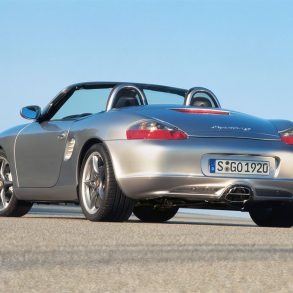
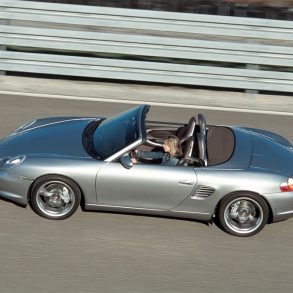
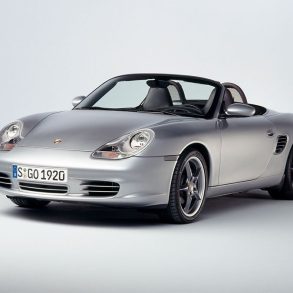
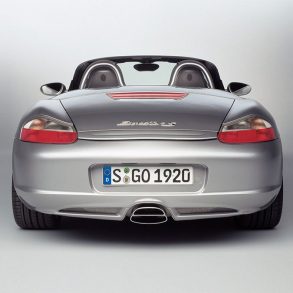
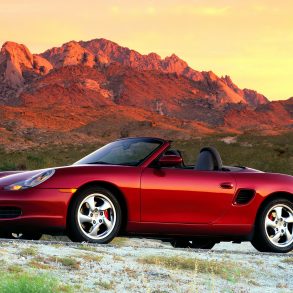
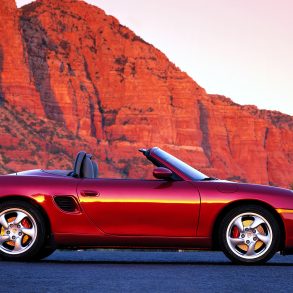
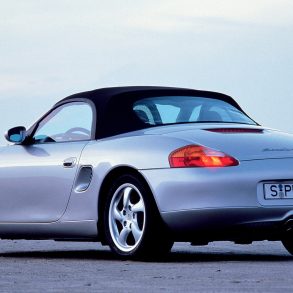
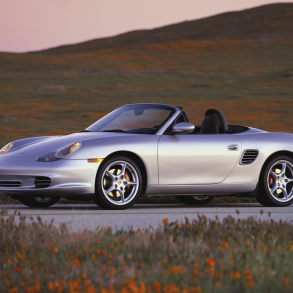
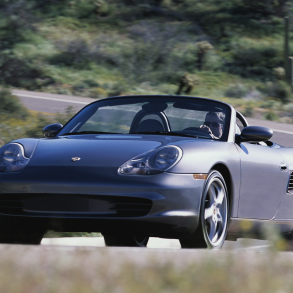
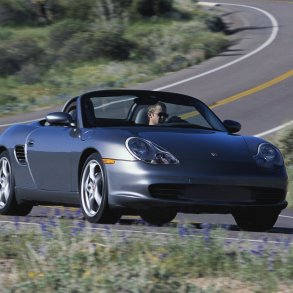
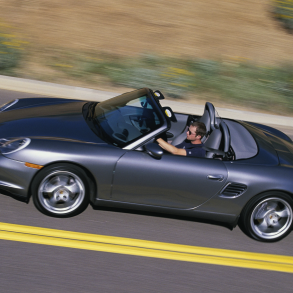
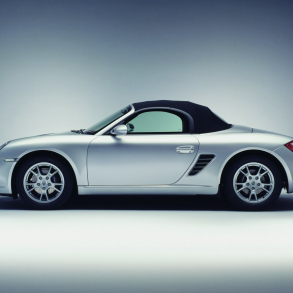
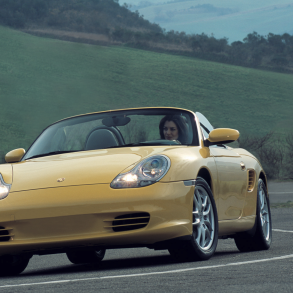
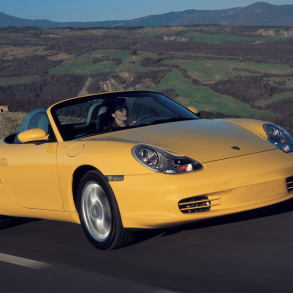
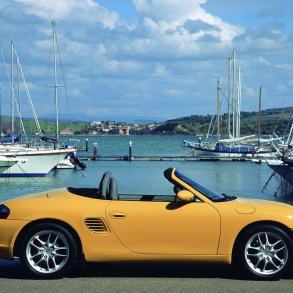
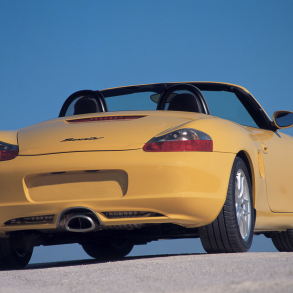
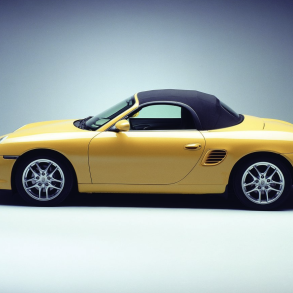
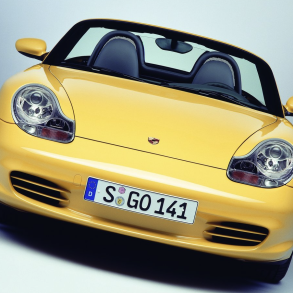
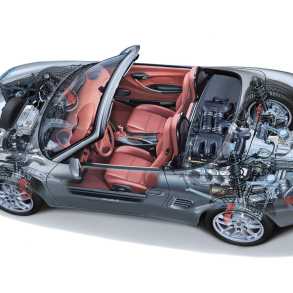

The Boxster's 2.5-liter M96 f1lat-six ushered in a new series of volume production Porsche powerplants and shared many components with the larger 3.4-liter version that powered the 996-gen 911 of 1999. It must be stated that the initial M96 engines were never intended by Porsche to be turbocharged or used for racing purposes, so some compromises were made in terms of cost savings and improved packaging.
The M96 engine used a pair of cylinder block castings (each with three cylinders) that resembled the design of the 944 block in that the free-standing cylinders were integral to the castings, with "open deck" water jackets around the tops of the cylinders. This reduced the casting costs compared to a more complex "closed deck" design while allowing better cylinder cooling. Porsche's supplier had some well-documented casting issues with early M96 engines, including porosity and cracked cylinders, but the vast majority of these failures occurred during the warranty period.
The M96 used a thoroughly modern cylinder head design with pent-roof combustion chambers and four valves per cylinder, driven by dual overhead camshafts. The M96 engine adapted the 968's VarioCam system to broaden the torque curve by varying the intake cam timing by up to 15 degrees relative to the crankshaft. Unlike the air-cooled 911 and like the 944 and 928, the M96 used a less complex and less expensive "wet sump" oiling system. However, Porsche referred to the lubrication system as an integrated dry sump": while the M96 had a traditional oil pan/sump at the bottom of the engine instead of a separate reservoir, a scavenge pump at the non-drive end of each cylinder head served to evacuate oil from the heads and return it to the sump.
The 2000 model year saw the 986 Boxster's engine displacement increase to 2.7 liters (via the 996 crankshaft with a 78 mm stroke), and the previous cable-operated throttle body was updated to an electronically-controlled enabled operation of the optional Porsche Stability Management system. The bigger change for the 2000 model year was the introduction of the more powerful Boxster S model with 252 hp, which was achieved by using the 996 crankshaft with a 93 mm bore to displace 3.2 liters.
For manually-shifted versions, the Boxster's engine transmitted torque via a dual-mass flywheel to an Audi-based five-speed transaxle, which saw Porsche's first use of cable-operated shifting instead of a rod linkage. The pair of shift cables provided not only better packaging but arguably better shifter feel and action than any of Porsche's previous designs.
A ZF-based five-speed Tiptronic automatic transaxle was an option from the beginning of 986 production. This was a similar concept to the previous 993 version with shifter buttons on the steering wheel. Still, the shifts were firmer and quicker, and the driver could tenmporarily over-ride the shift program in automatic mode by activating the upshift or downshift buttons.
The Boxster S featured an upgraded six-speed manual transaxle supplied by Getrag, similar to the one in the 996. This was a much beefier unit than the base five-speed, with larger gears and larger bearings for the shafts. The axle shafts and CV joints of the 986 S were also similarly up-sized to 996 specifications.
The Boxster debuted in 1996 as a 1997 model year car and, at the time, it was Porsche's first clean-sheet design in over two decades. To make the project viable to the cash-strapped Porsche of the early 1990s, the 986 Boxster and upcoming 996-gen 911 replacement had to share : many components as possible. Therefore much of the front end structure was shared between the 986 and 996, along with the doors, front trunk lid, headlights, and most of the front chassis and suspension components. The 986 featured unibody construction composed of various grades of steel.
High-strength steel was used in key sections of the floor, rocker/sill areas, and frame horns, while ultra-high-strength, boron-enriched steel tubing was used in the windshield frame and rollover hoops. The result was remarkable rigidity in torsion and bending for an open-topped roadster, which was key to the 986 Boxster's refinement and handling prowess. The Boxster featured a slick, lightweight power convertible top mechanism that folded under a steel tonneau cover. A removable hardtop with a heated rear window was an option.
Early 986 Boxsters had a plastic rear window, with the face-lifted 2003 models receiving a heated glass rear window. The tight packaging of the 986 left no space for a conventional engine lid or hatch--the top had to be opened into a "service position" and some insulation and a cover had to be removed to access the top of the engine.
The 986 used the tried-and-true MacPherson strut front suspension to maximize packaging efficiency, with each strut located by a pair of interlinked lower control arms. The mid-engine layout made it difficult to fit a multi-link suspension as used in the 993 and subsequent 996, so Porsche engineers devised a similar three-link design as used in the front of the 986. To save manufacturing costs, the same basic upright/hub carrier casting was used at all four corners, which enabled the use of the same lateral lower control arms for each corner.
The ideal weight balance and centralization of mass of the Boxster's mid-engine platform (47 percent front/53 percent rear for manual transmission models, 45/55 with Tiptronic) enhanced traction and enabled a low polar movement of inertia for quick turn-in and agile handling.
However, this increased rate of rotation could be dangerous for an unskilled driver, so Porsche designed the suspension geometry and calibrated bushing compliance to induce gentle understeer in most situations, which enabled the confidence-inspiring handling that the Boxster platform is known for today.
The 986 Boxster was the first Porsche to use monoblock brake calipers, a joint development with Italian supplier Brembo. The single casting for the brake caliper reduces weight by about six percent while providing increased caliper rigidity and better brake pedal feel. All subsequent Porsche sports car brake calipers have used this monoblock design, including the 986 S, which featured larger four-piston front and rear calipers clamping larger cross-drilled and ventilated rotors.
We dig into some of the data surrounding the first generation Porsche Boxster, including production numbers, specifications, chassis numbers, sales brochures, equipment codes, maintenance schedules, common problems, colors and much more.
The initial Porsche Boxster (986) was designed by Grant Larson, an American designer working at Porsche’s design studio under the direction of Harm Lagaay, who was the head of Style Porsche at the time. Larson’s work drew inspiration from the iconic Porsche 550 Spyder and the 356 Speedster, resulting in a modern interpretation of a classic Porsche roadster.
The first-generation Porsche Boxster (986) was produced from 1996 to 2004. It debuted in Europe in late 1996 and arrived in North America as a 1997 model. The model received a facelift in 2003, which included updates to the front and rear styling, interior improvements, and engine upgrades.
The first-generation Porsche Boxster (986), produced from 1996 to 2004, remains an accessible entry point into Porsche ownership. In the current market, prices for used 986 Boxsters vary based on factors like model year, mileage, condition, and trim level. The 986 Boxster is gaining recognition as a modern classic, leading to increased interest and rising values. Experts suggest that prices are unlikely to remain this low for long, especially for well-maintained examples. If you're considering purchasing a 986 Boxster, it's advisable to act sooner rather than later, as the market for these vehicles is showing signs of appreciation.
Base Models (1997–2004): Prices typically range from $6,000 to $14,000. Higher-mileage examples can be found at the lower end, while well-maintained, low-mileage cars command higher prices.
Boxster S (2000–2004): These models, featuring a more powerful 3.2L engine, generally sell for $10,000 to $20,000. The average sale price for a manual Boxster S is around $17,500.
Exceptional Examples: Rare or exceptionally well-preserved Boxsters have fetched up to $40,500 at auction.
In the UK, early 986 Boxsters are among the most affordable Porsches available. Entry-level models can be found starting at £4,000, making them attractive options for enthusiasts seeking a budget-friendly sports car.
The difference between the first-generation Porsche Boxster (986) and the second-generation Boxster (987) is both substantial and evolutionary—Porsche refined nearly every aspect of the car for the 987 while preserving the core mid-engine roadster formula. In short, the 986 is more of a raw, analog sports car, beloved for its simplicity and lightweight feel, while the 987 is more refined, powerful, and livable, representing Porsche’s transition into the modern sports car era.
Visually, the 987 Boxster introduced in 2005 featured a more modern and muscular appearance. The body was slightly larger, with sharper lines, revised headlamps, and rounder taillights replacing the "fried egg" headlights of the 986. While the 986 shared some design elements with the 996 911, the 987 looked more distinct and upscale, with broader hips and a more cohesive aesthetic.
The interior quality took a significant leap in the 987. Porsche addressed criticism of the 986’s somewhat plasticky cabin by upgrading to higher-grade materials, a more sophisticated center console, metal trim accents, and optional features like PASM (Porsche Active Suspension Management). The ergonomics and overall build felt much closer to that of the contemporary 997-generation 911.
While both generations shared the flat-six engine architecture, the 987 came with updated engines and more power. Initially, the 987 Boxster had a 2.7L flat-six (240 hp) and the Boxster S had a 3.2L (280 hp)—later increasing to 2.9L and 3.4L DFI (Direct Fuel Injection) engines in the 2009 refresh (known as the 987.2), which also eliminated the troublesome intermediate shaft (IMS) bearing issue that plagued the 986 and early 987 cars.
Though both cars used a similar mid-engine platform, the 987 featured a stiffer chassis, improved suspension tuning, and better handling balance. Porsche also offered active suspension (PASM) and optional Sport Chrono for sharper performance.
The 987 introduced a more modern tech suite—better infotainment, optional navigation, improved climate control, and more robust safety systems. The facelifted 987.2 models even added PDK dual-clutch transmission in place of the older Tiptronic automatic.
The original Porsche Boxster (986) was a pivotal car for Porsche and a surprisingly innovative sports car for its time. Launched in 1996, it was Porsche's first mass-produced mid-engine roadster, a layout that allowed for near-perfect weight distribution and superb handling. This was a dramatic shift from the brand’s traditional rear-engine layout seen in the 911, and it offered a more balanced, confidence-inspiring driving experience—especially for newer drivers.
What made the Boxster so special was that it was engineered from the ground up to be affordable, fun, and unmistakably Porsche, without diluting the brand’s DNA. It shared many components with the upcoming 996-generation 911—including front-end styling, interior elements, and its M96 engine architecture—which allowed Porsche to streamline production and reduce costs at a critical financial moment. This platform-sharing not only saved Porsche from financial collapse but also helped define a new era of modular design.
Beyond that, the Boxster’s design was a bold nod to Porsche’s heritage, echoing the spirit of the 550 Spyder and 356 Speedster with modern sensibilities. Its responsive handling, crisp steering, and mid-mounted flat-six engine gave enthusiasts an accessible, pure-driving Porsche that delivered everyday usability and top-down thrills at a fraction of the 911’s cost.
In essence, the original Boxster was innovative not through extreme horsepower or luxury, but by redefining what a modern, balanced, driver-focused sports car could be, all while ensuring Porsche’s future. It’s now regarded as a modern classic—and for good reason.
The performance of the first-generation Porsche Boxster (986) varied between the base model and the more powerful Boxster S, but both delivered engaging, well-balanced speed for their era.
Engine: 2.5L flat-six (1997–1999), later upgraded to 2.7L (2000–2004)
Horsepower: 2.5L: 201 hp
2.7L: 217–228 hp depending on year
0–60 mph: ~6.4 to 6.9 seconds
Top Speed: ~155 mph
The base Boxster offered brisk performance, especially when paired with the manual transmission. Its lightweight chassis and mid-engine layout made it more about cornering finesse than outright straight-line speed.
Engine: 3.2L flat-six
Horsepower: Early models: 250 hp, Later models (2003–2004): 258 hp
0–60 mph: ~5.5 to 5.7 seconds
Top Speed: ~164–166 mph
The Boxster S was a noticeable upgrade, with stronger acceleration, larger brakes, and improved suspension tuning. It delivered performance approaching that of a 911 of the same era but with a more neutral, forgiving chassis. While not supercar-fast, the 986 Boxster and Boxster S were celebrated for how accessible and rewarding their performance felt, especially in real-world driving conditions.
The best year for a first-generation Porsche Boxster (986) is widely considered to be either the 2003 or 2004 model, especially if you’re looking at the Boxster S variant. By this point in the production run, Porsche had ironed out many of the earlier issues that affected the late 1990s models, particularly around engine reliability and interior quality. The 3.2-liter Boxster S in these years offered 258 horsepower, giving it strong and responsive performance, while benefiting from improved durability thanks to updates to the cooling system and internal components.
These later years also received a mid-cycle facelift that subtly sharpened the Boxster’s appearance and added meaningful usability improvements. Porsche replaced the dated plastic rear window with a glass one that included a defroster, added a glovebox for more interior storage, and modernized the front and rear bumpers along with the lighting design. The result was a car that looked more polished and upscale, while maintaining the light, connected feel that made the 986 such a joy to drive in the first place.
For many enthusiasts, the 2003–2004 models strike a perfect balance—they represent the most refined versions of the original Boxster platform without stepping into the more expensive and heavier 987 territory. They also tend to have better build quality and more standard features, making them easier to live with daily. If you’re shopping for a 986 today, these final-year models offer the best blend of performance, reliability, and value.
Yes, the first-generation Porsche Boxster (986) received a significant mid-cycle update for the 2003 model year, which brought a number of meaningful mechanical, cosmetic, and usability improvements. While the overall design and platform remained the same, the facelift addressed earlier criticisms and brought the model up to date with more refined features.
One of the most noticeable updates was the switch from a plastic rear window to a heated glass rear window, greatly improving long-term visibility, durability, and ease of maintenance—especially for owners in colder climates. Alongside this, Porsche added a glovebox to the interior, improving storage in an otherwise minimalistic cabin. The materials used throughout the cabin were also slightly improved, addressing complaints about the somewhat spartan feel of earlier models.
Visually, the 2003 refresh included revised front and rear bumpers, new clear indicator lenses, and subtle lighting updates that gave the Boxster a cleaner, more modern appearance. Under the skin, Porsche also made various small mechanical and electrical tweaks, and the Boxster S saw a slight power bump to 258 hp. While these changes weren’t revolutionary, they significantly elevated the car’s quality, functionality, and appeal, especially for buyers cross-shopping newer competitors.
This mid-cycle update cemented the 2003–2004 Boxsters as the most desirable 986 models, as they combine the early car’s purity with meaningful refinements that make a real difference in everyday driving and ownership.
Join Our Porsche Community
Sign up for our weekly Porsche newsletter. The latest Porsche news, rumors, reviews and more delivered to your inbox. Cool Porsche stuff perfect for the flat-six obsessed.